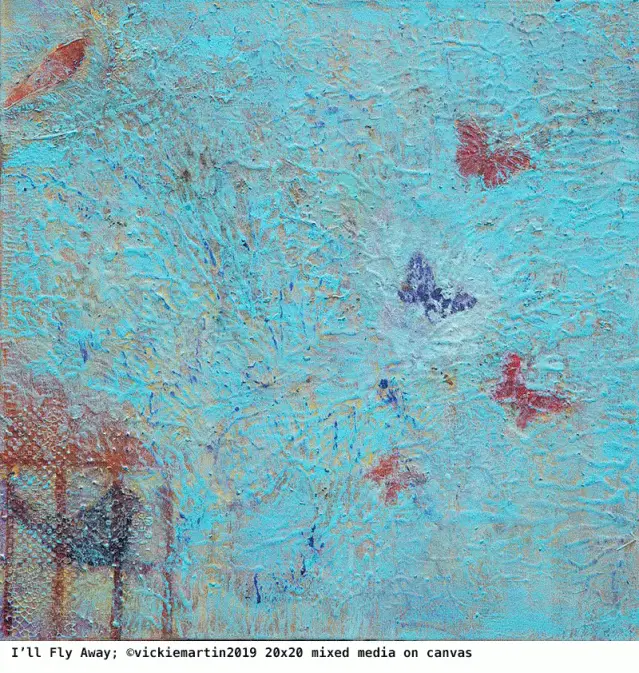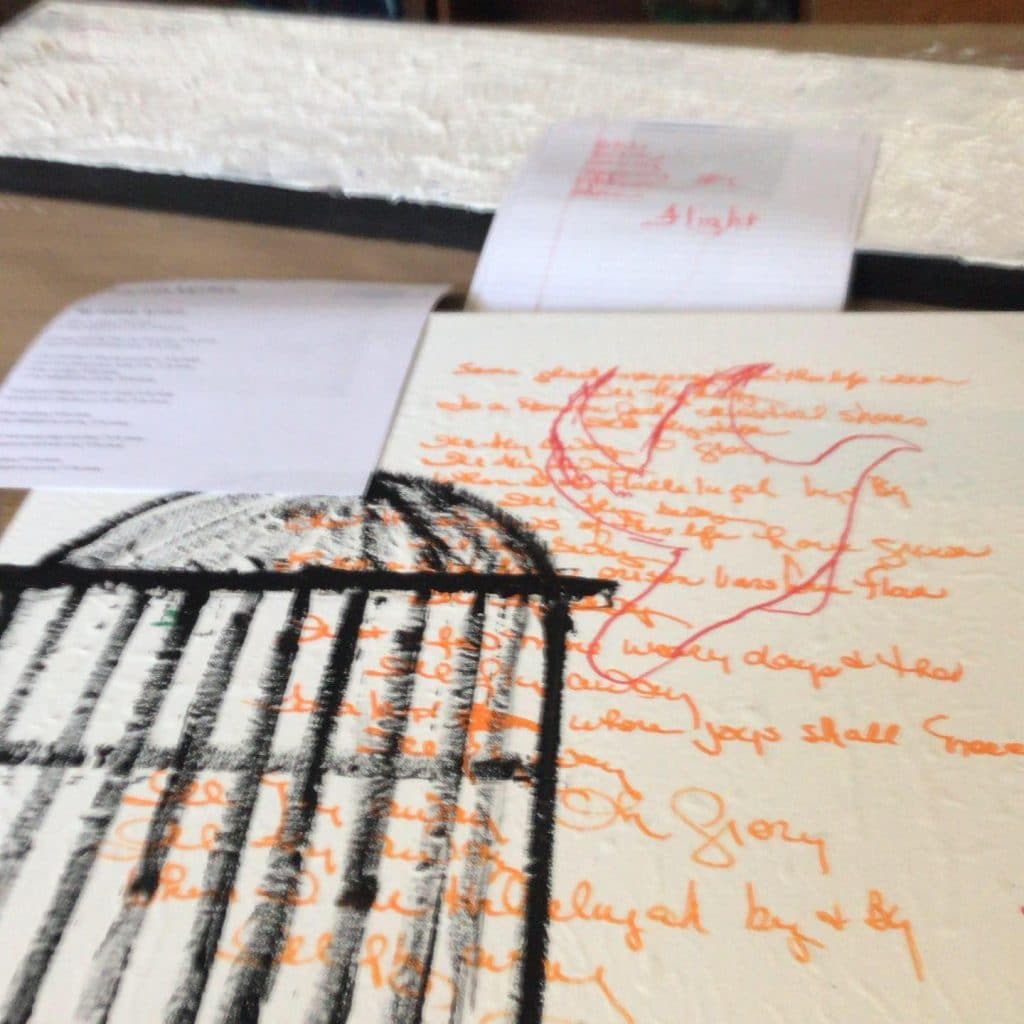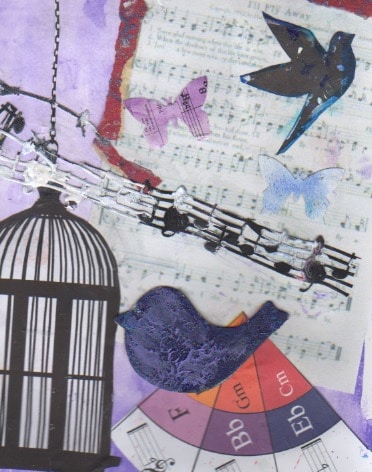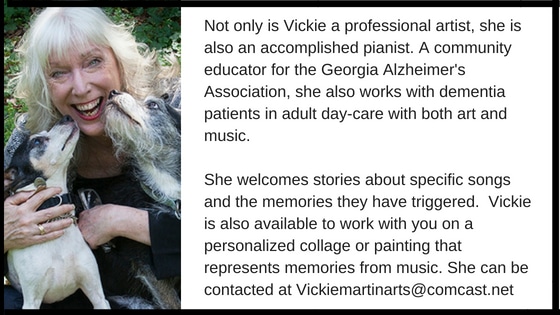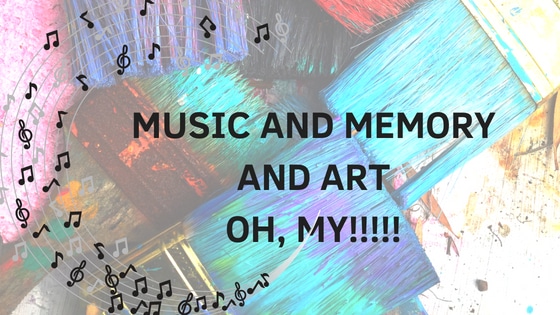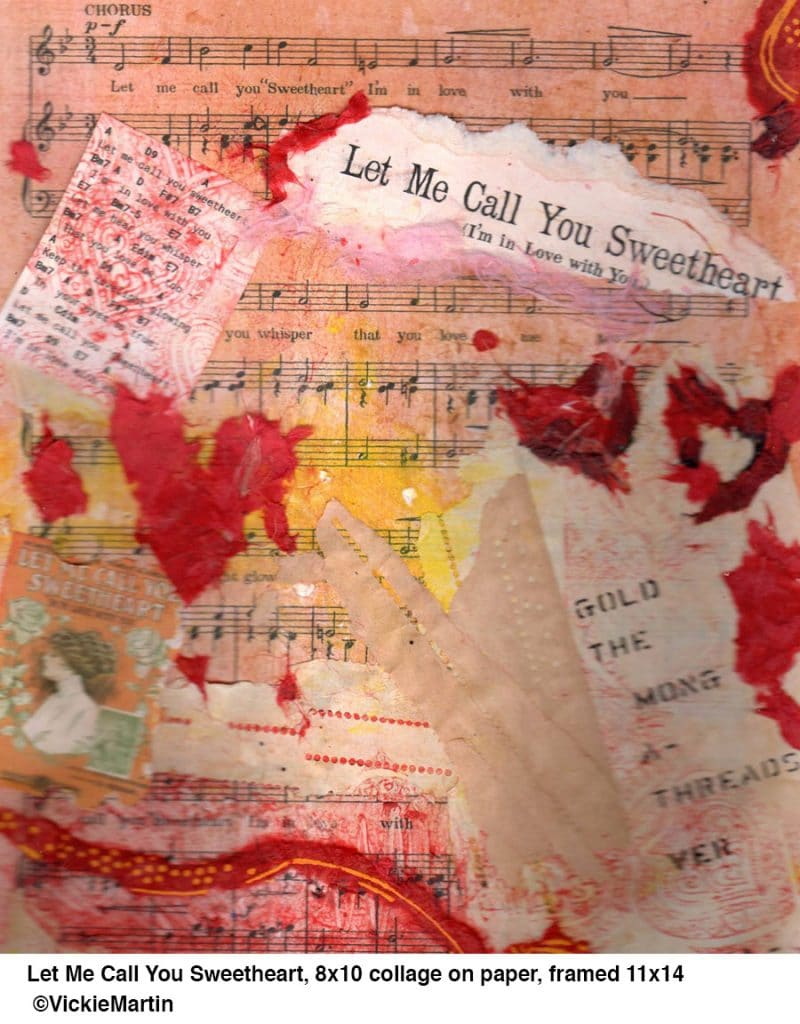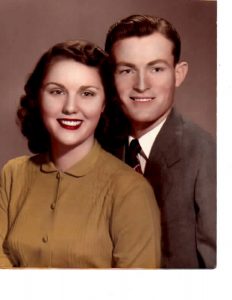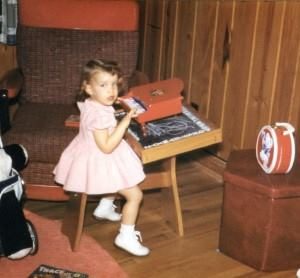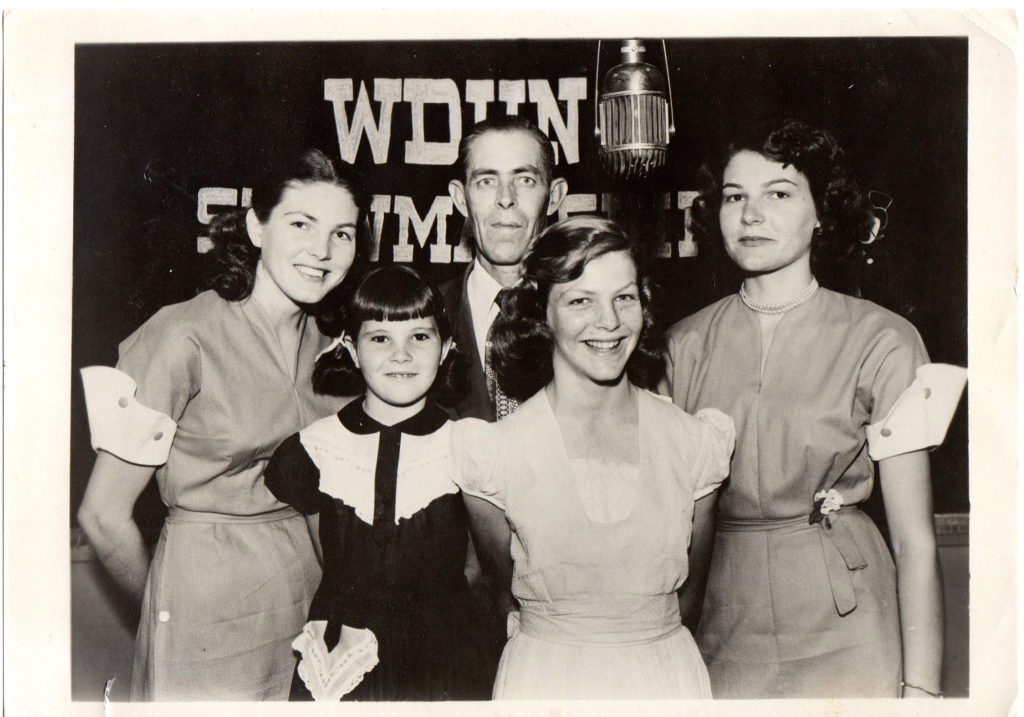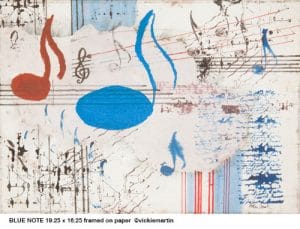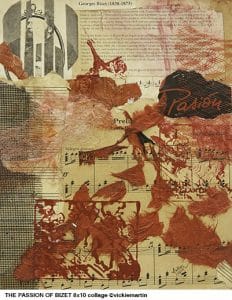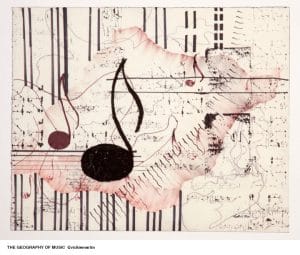The song I’ll Fly Away is featured in this blog as part of my series MUSIC STILL REMAINS, which is an exploration of music and memory inspired by dementia – and you can read more about the series in this blog.
I begin each painting by applying texture, which is symbolic of the plaques and tangles found in the brain of those with dementia. I then handwrite the entire lyrics on the canvas. The song was suggested to me by my piano teacher. Oh, I forgot to mention, learning to play each song on the piano is part of the process of every painting.
Many people believe this is the most recorded of all gospel songs (hard to believe, but the songs you are thinking about being more recorded are actually considered “hymns”). In fact, this song recently made an appearance in the movie O BROTHER WHERE ART THOU? – check out the video here. It’s been recorded by a wide array of artists – from Johnny Cash to Kanye West!
As you can see from the above picture, the first several layers look very different from the finished painting. I started using birds – but changed it to butterflies. The birdcage was ultimately scaled down. So, when it was all over and done – I took all my little supplies and made the collage below.
I’ll Fly Away was written in 1929, and is considered “theological escapism” – escaping earth for the joys of heaven. Using birds and angels in the lyrics symbolizes the freedom from pain and toil. Below are a few of the verses of the song.
Is there a song that always brings up a memory for you? I’d love to know the song and what the memory is!
Some bright morning when this life is over
I’ll fly away
To that home on God’s celestial shore
I’ll fly away
I’ll fly away, oh glory
I’ll fly away in the morning
When I die, Hallelujah by and by
I’ll fly away
When the shadows of this life have gone
I’ll fly away
Like a bird from these prison walls I’ll fly
I’ll fly away
